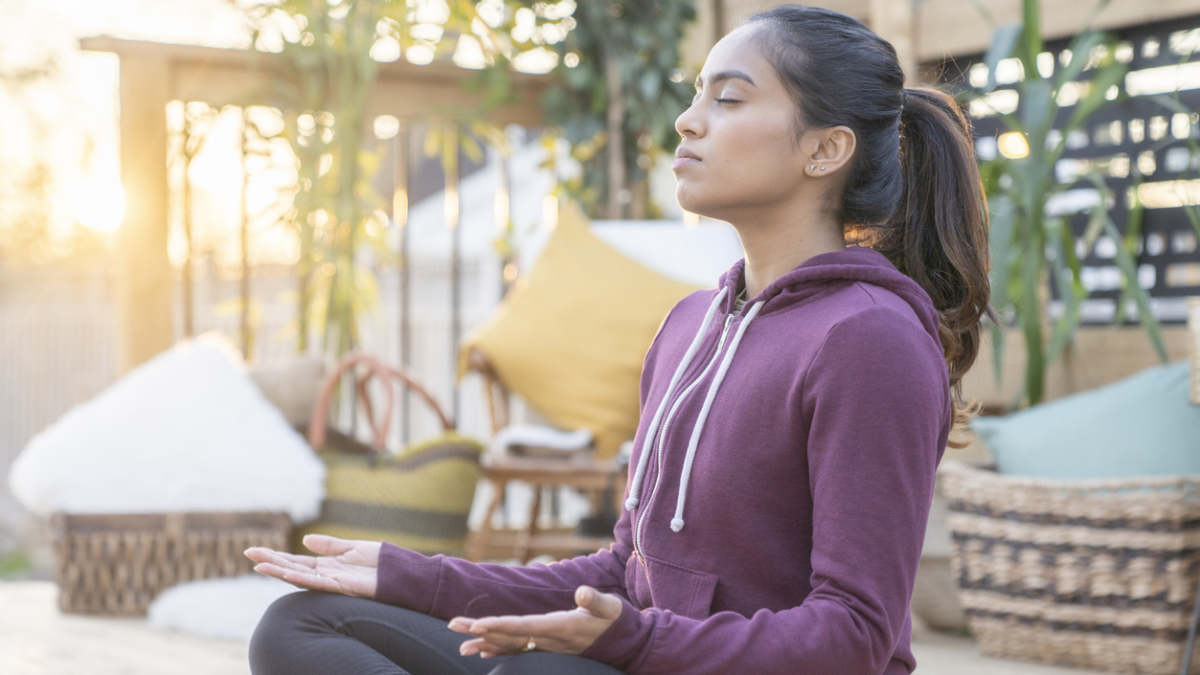
September is a time of change and transition. While there is excitement to get back to school, we can also feel a lot of stress and anxiety. This is true if you’re a teacher, a parent or a student. Thankfully, there are tools to help calm your stress and anxiety.
On September 27th, Robin and A-List co-hosted Robin Coach and Psychology Chair & Professor at Iona College, Dr. Colleen Jacobson on an IG Live to explain how we can all harness mindfulness to decrease our anxiety and nerves.
Q. Before we get started, tell us what mindfulness means to you.
A. It’s all about being present and focused in the moment. It’s not obsessing about what happened in the past or worrying about what may happen in the future. I really like Jon Kabat-Zinn’s definition: “Mindfulness is awareness that arises through paying attention, on purpose, in the present moment, non-judgmentally.”
Although mindfulness is born out of the Buddhist religion, the way I and other psychologists use it is non-spiritual. Instead, it is about a state of mind.
Q. What are the benefits of mindfulness?
A. There are so many benefits of practicing mindfulness. First, we must acknowledge that our brains are wired to multi-task, be able to handle thinking of more than one thing at a time and respond to threats. However, research has proven that a mindfulness practice can really help us in so many ways. It can lead to decreased stress, anxiety, and depression. It also can help to increase our attention and focus which translates into better grades or better work output. It also can lead to higher quality sleep, better immune function and better quality relationships.
Practicing mindfulness for 10 minutes a day for eight weeks has been proven to actually change the way our brains work.
Q. How does mindfulness actually work?
A. Practicing mindfulness for 10 minutes a day for eight weeks has been proven to actually change the way our brains work. Specifically, there are three parts of the brain that are really important for planning, judgement, impulse control, attention and emotional reactivity. Mindfulness can play a role in improving the function of all three.
- The Prefrontal Cortex is the part of our brain that is responsible for making wise decisions and controlling our impulses. This part of the brain is still growing for teens and is not fully developed into the late 20s. Mindfulness has been shown to improve the function of your prefrontal cortex and can even grow this area.
- The Amygdala is the structure of the brain that helps us process emotions, especially those that are threatening, dangerous or negative. For many of us, the amygdala is on hyperdrive. For example, it can be overly active when we are taking a test. Studies have shown that practicing mindfulness actually shrinks the amygdala and helps calm anxiety and stress.
- The Hippocampus is responsible for memory and memory storage. The hippocampus has been shown to grow with a regular practice of mindfulness.
Q. Can you recommend some mindfulness exercises?
A. First it’s important to note that mindfulness can be practiced in different ways depending on the state of mind you’re trying to achieve. Let me take you through three different desired mindsets and techniques to try.
- Choose a mindfulness mantra that will calm you down if you’re feeling anxious and full of high, chaotic energy. One example of a Mantra is “I am strong and I can work through anything.” Start by breathing in for four counts and out for four counts. At the bottom of your exhale, speak your mantra out loud.
- Listen to an upbeat song mindfully if you’re low energy and unmotivated. Better yet get up and dance. This can help you energize the environment. My personal musical preference is Post Malone but you do what energizes you!
- 1 – 2 – Buzz. If you want to connect a group of people or students, play 1 – 2 – Buzz. It is a counting game where each player begins counting in a sequence from player to player. When a multiple of 3 comes up, that player has to replace the number with Buzz. It forces everyone to work together, concentrate and pay attention to what they are doing now. This exercise works great in group settings to bring people together.
I’d recommend building a toolbox of mindfulness activities to use depending on what mindset or energy level you are trying to achieve. You can remind yourself and your students that mindfulness is any activity that brings you to the present moment, experiencing the NOW without distractions or judgement.
Q. How can you teach or encourage young people to practice mindfulness?
A. The best way to encourage your teens to practice mindfulness is by practicing it yourself. Lead a simple mindfulness exercise for others while fully participating in it yourself. With my college and graduate students, I start every class with a mindfulness exercise. Devoting just a few minutes to a mindfulness practice at the start of class time is a great way to get others into the habit and it is great for your mindset too.
The best way to encourage your teens to practice mindfulness is by practicing it yourself.
Q. What is your best advice for how to get started?
A. Just get started! There are a ton of free apps that you can use. In fact, Robin partners with Mindful Minute, a free app that you can find on Instagram. My advice is to experiment and find what works for you. You can always find 3 minutes a day. I promise you will start to see the benefits soon after you commit to a regular practice.
